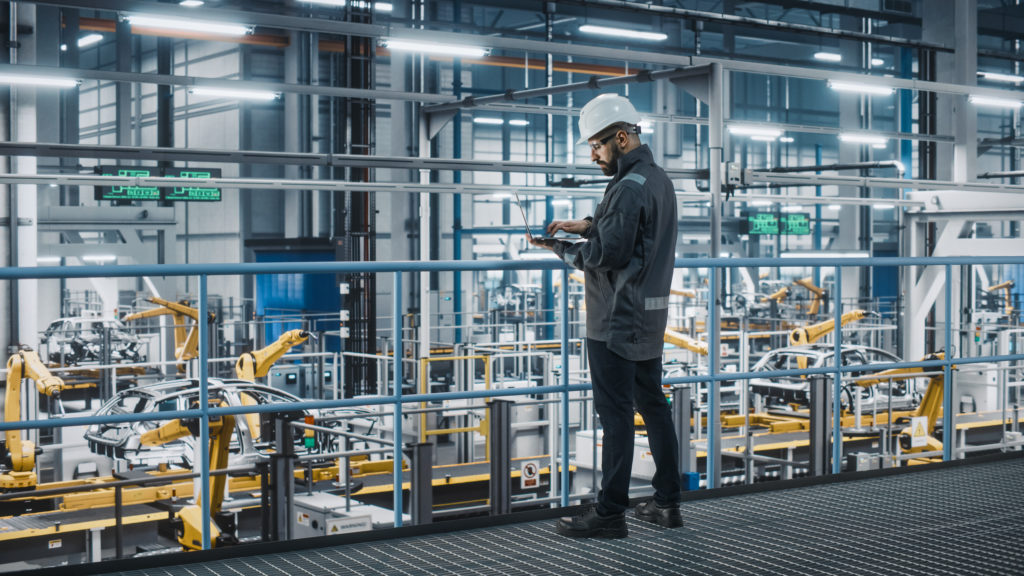
Meeting production targets requires the efficient use of resources, from raw materials to machines and labor. Production efficiency is the measurement of how effectively your organization uses its resources and can be a good metric to analyze if you need to make adjustments to your manufacturing practices. It can also help you determine where you need to make those adjustments.
Excellent production efficiency means that your business operates effectively for the amount of resources it needs, resulting in minimal waste and maximum output. On the other hand, poor production efficiency means your business needs to optimize processes or make other changes to become more cost-effective.
Poor production efficiency wastes labor and materials. It also lowers profitability and may mean your business struggles to meet production demand.
Measuring Production Efficiency: Essential Metrics and Formulas
Manufacturing companies use several methods to measure their production efficiency depending on what they’re producing. Key performance indicators (KPIs) can provide a standardized measurement of your production efficiency.
Here are some of the essential KPIs every manufacturing company should measure.
Overall Equipment Effectiveness (OEE)
This metric measures your equipment availability, performance, and quality to evaluate its effectiveness. To calculate it, you’ll need the following data:
- Availability % = Run Time / Planned Production Time
- Performance % = (Ideal Cycle Time x Total Count) / Run Time
- Quality % = Good Count / Total Count
Once you have these numbers, multiply them to find your Overall Equipment Effectiveness (OEE) score:
Availability % x Performance % x Quality % = OEE
Your OEE score is a standardized way to measure how your equipment and processes are functioning. These scores can give you an easy way to track your production efficiency across shifts or longer periods of time and can ultimately indicate if processes need improvement.
OEE industry-standard group scores are:
- 100% – Perfect
- 85% – World Class
- 60% – Typical
- 40% – Low
If your OEE score is below 60%, this can indicate that your production efficiency needs improvement.
Asset Utilization
This KPI measures how effectively your organization is using its equipment. Assets are costly equipment that require maintenance and take up time and space. If your asset has a low utilization rate, it could indicate that you aren’t getting good value from your investment in that equipment.
To calculate asset utilization, you’ll need to know:
- The total number of hours the equipment was used in the period of time you’re measuring
- The total number of hours in the time period you’re measuring
Once you have these numbers, you can plug them into this formula to calculate your asset utilization percentage:
Number of hours the equipment was used / Total number of hours available = Asset utilization percentage
Low asset utilization rates could be caused by unplanned machine downtime, poor inventory management, inefficient machine maintenance practices, or other reasons.
The Role of a CMMS in Enhancing Production Efficiency
Even if you know your production efficiency needs to improve, it can be difficult to pinpoint the reasons for substandard scores or exactly what your organization needs to do to improve them.
The right technology can help. Computerized Maintenance Management System (CMMS) software is a powerful tool for enhancing production efficiency across your organization.
CMMS software allows you to monitor asset performance and address issues before they result in unplanned downtime. It simplifies preventive and scheduled maintenance by streamlining work orders, scheduling techs, and ensuring a robust spare parts inventory so your techs have what they need when they need it.
Reports and dashboards allow asset performance monitoring, both on-site and remote. And detailed maintenance records help you monitor how frequently your assets need repair and maintenance.
A quality CMMS ensures your assets are running optimally and provides you with the reporting and analytics you need to make decisions to enhance production efficiency.
Case Studies: Successful Implementation of Production Efficiency Practices
Implementing a CMMS can have a significant impact on production efficiency.
When Klein Plastics, a plastic manufacturer of automotive parts, appliances, tools, and furniture, implemented eMaint CMMS, the company increased their OEE by 20%. Using eMaint CMMS allowed Klein Plastics to improve consistency and productivity across all shifts.
Bemis Company Inc., a global supplier of flexible packaging, had similar results when it implemented eMaint CMMS. Bemis reduced their equipment downtime from 20% to just 3% and also increased their technician utilization rate from 50% to 80%. And, perhaps most impressive of all, the company went from completing just 13% of work orders within 30 days to completing 73% within the same time span.
These are just a few examples of manufacturing companies that have seen a measurable impact on their production efficiency scores by implementing CMMS software. Other manufacturing companies have experienced additional benefits like reduced equipment downtime, improved cost savings, and increased performance metrics.
Increase Production Efficiency by Leveraging CMMS Software
Maintaining high production efficiency is key to your organization’s health. It ensures you’re producing quality products and maximizing your resources, increasing productivity, and reducing costs. Leveraging a CMMS helps your organization increase OEE and asset utilization scores through effective data gathering, scheduling tools, reporting, and analytics.
eMaint CMMS impacts entire organizations and provides real-time data which allows companies to quickly find and correct flaws in their processes. Schedule a demo to see what eMaint can do for you.
